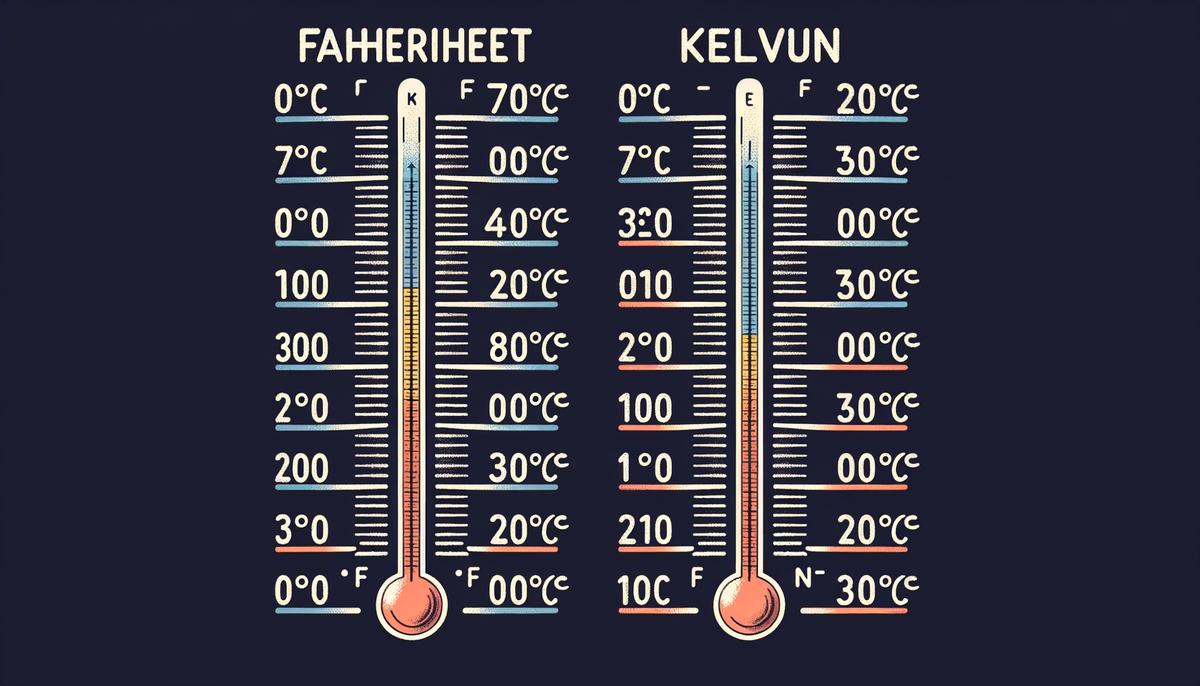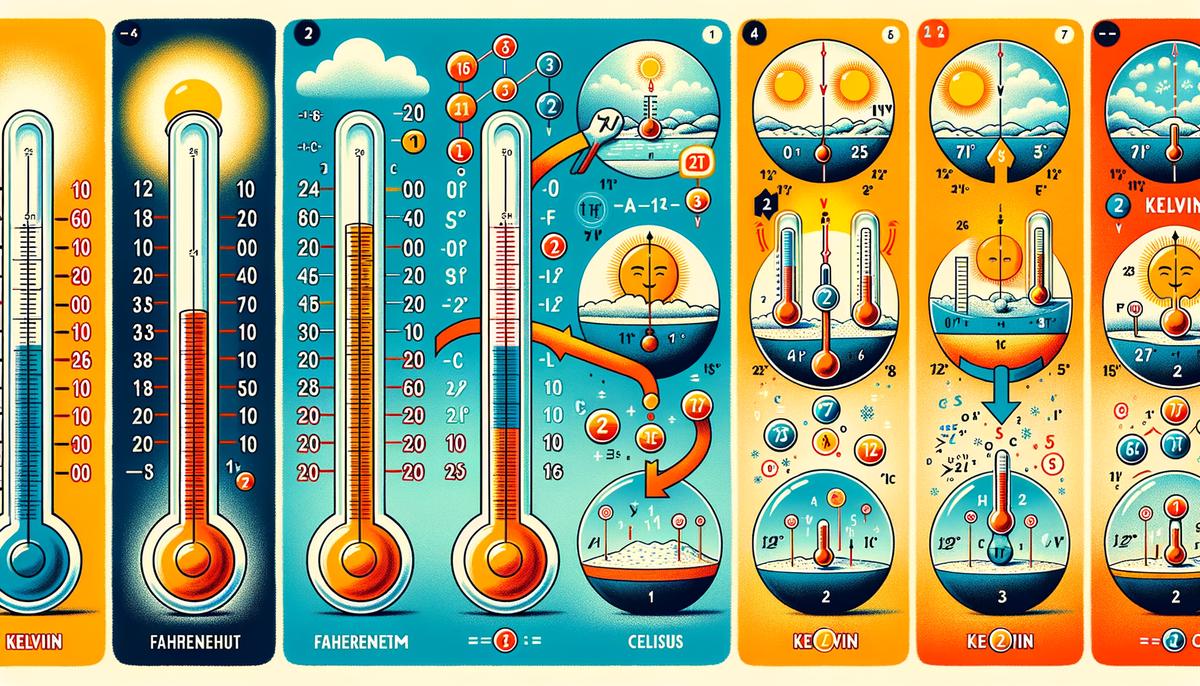Temperature scales, such as Fahrenheit and Kelvin, serve as crucial instruments in our daily lives and scientific endeavours, each presenting a unique approach to measuring thermal conditions. This article explores these scales, shedding light on their origins, significance, and the methodology for converting between them, thus providing a comprehensive understanding of their impact on both routine activities and scientific practices.
Understanding Temperature Scales
The Fahrenheit and Kelvin scales are two systems used for measuring temperature, each with its unique definitions and applications.
Fahrenheit Scale
The Fahrenheit scale, denoted as °F, is mainly used in the United States for everyday temperature measurements, such as the weather, and in cooking. This scale was created by Daniel Gabriel Fahrenheit, a German physicist, in the early 18th century. On this scale, the freezing point of water is set at 32°F, and the boiling point is at 212°F under standard atmospheric conditions, making a total of 180 degrees between these two points. One of the distinctive features of the Fahrenheit scale is its ability to represent both very cold and very warm temperatures in double-digit numbers, which some find convenient for daily use.
Kelvin Scale
The Kelvin scale, symbolised as K (without the degree symbol), is primarily used in scientific contexts worldwide. It was named after Lord Kelvin (William Thomson), a British mathematician and physicist, who introduced it in the mid-19th century. Unlike the Fahrenheit scale, the Kelvin scale starts at absolute zero (−273.15°C or −459.67°F), which is the lowest possible temperature where nothing could be colder, and all atomic movement stops. This scale sets the triple point of water (a state where water, ice, and water vapour exist simultaneously in equilibrium) at precisely 273.16 K. The Kelvin scale is essential in scientific fields because it enables precise calculations in physics and chemistry, particularly in the study of thermodynamics.
Converting between Fahrenheit and Kelvin
To convert temperatures from Fahrenheit to Kelvin, one can use the formula: K = (°F – 32) × 5/9 + 273.15. Conversely, converting from Kelvin to Fahrenheit involves: °F = (K – 273.15) × 9/5 + 32. Understanding and applying these formulas allows for accurate temperature measurements and conversions across various fields and everyday situations.
The Fahrenheit and Kelvin scales, each with their specific points of reference and areas of application, are fundamental to understanding and communicating temperature measurements in different contexts.

Conversion Fundamentals
Converting Fahrenheit to Kelvin, a vital skill in various scientific and everyday contexts, involves a simple, yet specific, mathematical formula. The formula to transform Fahrenheit into Kelvin is K = (F − 32) × 5/9 + 273.15. The process comprises three pivotal steps: subtracting 32 from the Fahrenheit value, multiplying the result by 5/9, and finally adding 273.15 to obtain the temperature in Kelvin.
To illustrate, consider converting a temperature of 68°F to Kelvin. Following our steps, first, subtract 32 from 68, giving us 36. Then, multiply 36 by 5/9, which equals 20. Finally, by adding 273.15 to our result, we find that 68°F equals 293.15K. This straightforward method ensures accurate conversion, bridging the gap between these two essential temperature scales.
Practical applications of this conversion are numerous. Scientists calculating chemical reactions’ thermal dynamics, meteorologists forecasting weather patterns, or even cooks experimenting with recipes requiring precise temperature control, all benefit from understanding how to convert Fahrenheit to Kelvin. Mastering this conversion empowers individuals to navigate and understand a broad spectrum of temperature-related data, essential in both academic and practical realms.
In summary, converting Fahrenheit to Kelvin is a clear-cut process essential for a wide range of scientific and practical applications. By following the simple mathematical steps outlined, one can accurately translate temperatures between these scales, enhancing understanding and facilitating communication across different fields. This skill is invaluable, further enriching our engagement with the natural and technological world.

Mastering the conversion between Fahrenheit and Kelvin is not merely an academic exercise but a practical skill that enhances our interaction with the world around us. It bridges the gap between everyday experiences and scientific exploration, enriching our comprehension of temperature-related phenomena. Armed with this knowledge, individuals are better equipped to appreciate the precision of scientific research and apply these conversions in various professional and personal settings, underscoring the versatility and indispensability of these temperature scales.
Leave a Reply